Euro coins
| Andorra | Austria | Belgium |
|---|---|---|
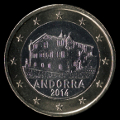 |
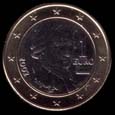 |
 |
| Croatia | Cyprus | Estonia |
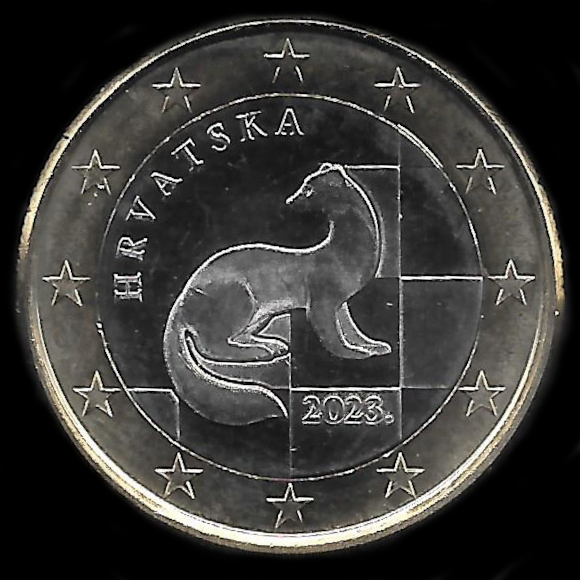 |
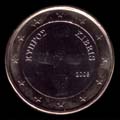 |
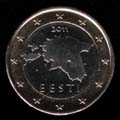 |
| Finland | France | Germany |
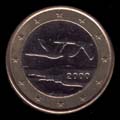 |
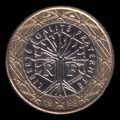 |
 |
| Greece | Ireland | Italy |
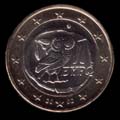 |
 |
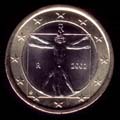 |
| Latvia | Lithuania | Luxembourg |
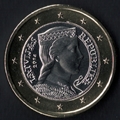 |
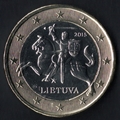 |
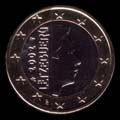 |
| Malta | Monaco | Netherlands |
 |
 |
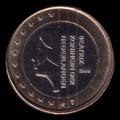 |
| Portugal | San Marino | Slovakia |
 |
 |
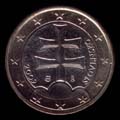 |
| Slovenia | Spain | Vatican |
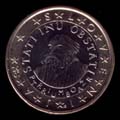 |
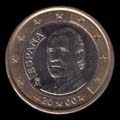 |
 |
Catalog of Euro Coins
Euro coins issued by the European Union are eight, with values from 1 cent, 2 cents, 5 cents, 10 cents, 20 cents, 50 cents and 1 and 2 euro.
Concerning the metal with which the coins are made, it is possible to distinguish three groups of coins:
- the euro from 1 cent, 2 cents and 5 cents, with a core made of stainless steel covered with copper;
- the 10 euro cents, 20 cents and 50 cents, made of an alloy of 89% copper, 5% aluminum, 5% zinc and 1% tin, called Nordic Gold (Nordic gold);
- Bi-metal coins from 1 euro and 2 euro, with the silver (1 euro coins inside and outside of the 2-euro coins) made of an alloy of copper-nickel and the gold (outside of the 1 euro coins and internal 2-euro coins) with a nickel-plated brass.
All euro coins have a common face of the back, while the obverse is different for each nation. The common side of euro coins was designed by Luc Luycx, Belgian Mint, winner of the competition at European level for the design of the coins. On the common face are represented three different maps of Europe, surrounded by 12 stars recalling the founding countries of the European Union. Following EU enlargement, the common side has been changed to coins from 10 cents to 2 euro, eliminating the border to the east.
The national side of euro coins, instead, shows different images for each nation, surrounded by a series of 12 stars of the founding countries of the European Union. The countries currently emitting euro coins are 23.
As a result of a recommendation from the European Central Bank of 3 June 2005 imposing presence on the national sides of euro coins intended for circulation of the name of the issuing State or its abbreviation, the currencies of Austria, Belgium, Finland, Germany and Greece had to change the design of their national side, something made in 2007 from Finland and other countries in 2008.
With regard to the characteristics of each coin, we have:
- the 1 euro cent coins have the steel part with a weight of 94.35%, while copper has a weight of 5.65% and the diameter of the coin is 16.25 mm, the thickness of 1 , 67mm, the weight of 2.30 g and the edge is smooth;
- the coins from 2 cents have the steel part with a weight of 94.44%, while the copper has a weight of 5.56%; the diameter of the coin is 18.75 mm, its thickness is of 1.67 mm, the weight is 3.06 g and the edge is smooth with a central groove;
- coins from 5 cents have the steel part with a weight of 94.64%, while copper has a weight of 5.36% and the diameter of the coin is 21.75 mm thick is 1, 67mm, weighs 3.92 grams and the edge is smooth;
- the currencies of 10 cents were minted from an alloy called Nordic Gold, are 19.75 mm in diameter, 1.93 mm thick and weighing 4.19 g of the board is scratched;
- the currencies of 20 cents were minted in Nordic Gold coins as 10 cents and 50 cents, have a diameter of 22.25 mm, a thickness of 2.14 mm, a weight of 5.74 g and the edge is smooth , but has seven indentations in a configuration known as "Spanish flower";
- coins from 50 cents are in Nordic gold, have a diameter of 24.25 mm, a thickness of 2.38 mm, a weight of 7.80 g and the edge is scratched;
- the 1 euro coins are bimetallic silver with the inside made of copper-nickel alloy, while the exterior is gold alloy nickel-plated brass, and their diameter is 23.25 mm, thickness 2.33 mm, the weight of 7.50 g and the edge has 6 segments, with 3 straight segments alternating with 3 segments finely striped;
- 2-euro coins are bimetallic with the inside gold alloy of nickel-plated brass, while the outside is silvered copper-nickel alloy, and their diameter is 25.75 mm, thickness of 2.20 mm, weight of 8.50 g and the edge is finely streaked with inscriptions different from country to country.
Following the difficulties in handling due to their small size, since 2002 in Finland and the Netherlands in 2004 coins from 1 cent and 2 cents are no longer in circulation and are produced only for packaging for collectors.
With regard to the inscriptions on the edge of the 2-euro coins, these are:
- Austria: the message "*** 2 EURO" repeated 4 times, inverting each repetition;
- Belgium, France, Ireland, Luxembourg, Monaco, Spain: the words "2 **" repeated 6 times, inverting each repetition;
- Cyprus: the word "EURO 2 ΕΥΡΟ 2" ("euro" in greek and turkish) repeated 2 times;
- Finland: the words "SUOMI FINLAND" ("Finland" in Finnish and Swedish) followed by 3 lions' heads;
- Germany: the phrase "Einigkeit UND UND RECHT Freiheit" ("Unity and Justice and Freedom" in German) followed by the eagle heraldry.
- Greece: the phrase "ΕΛΛΗΝΙΚΗ ΔΗΜΟΚΡΑΤΙΑ *" ("ELLENIKE Demokratia", ie "GREEK REPUBLIC" in greek;
- Italy, San Marino, Vatican City: the words "2 *" repeated 6 times, inverting each repetition;
- Malta: The sequence number "2" and two Crosses of Malta, repeated 6 times, inverting each repetition;
- Netherlands: the phrase "GOD * zij * MET * ONS *" ("God is with us" in Dutch);
- Portugal: a sequence of 7 5 castles and shields;
- Slovenia: "SLOVENIJA" ("Slovenia" in Slovene), followed by a period.
In addition to the normal circulation coins and collector coins from different countries were also minted several commemorative 2-euro coins, which recall events or characters of interest for each country or the EU as a whole.